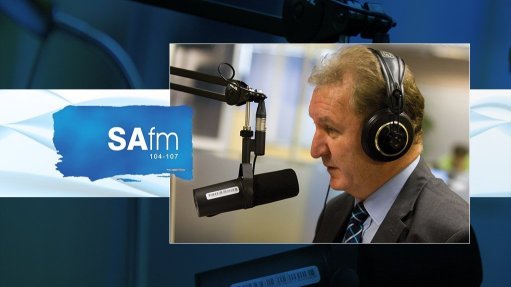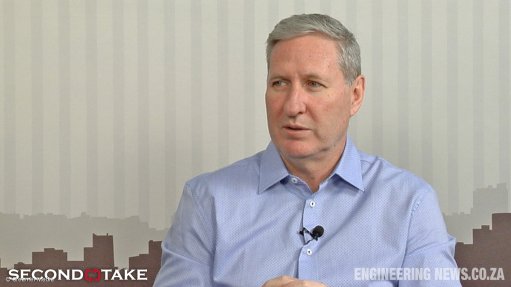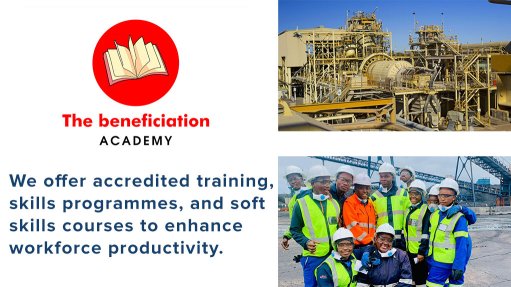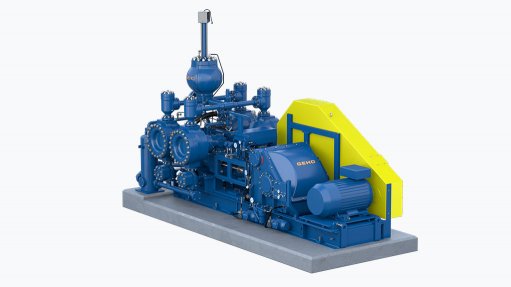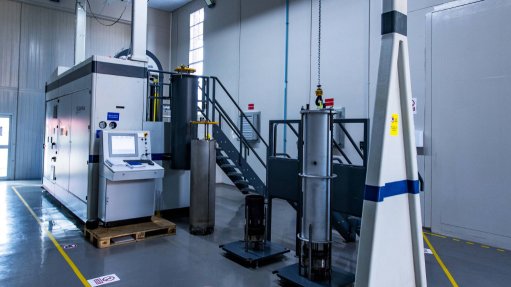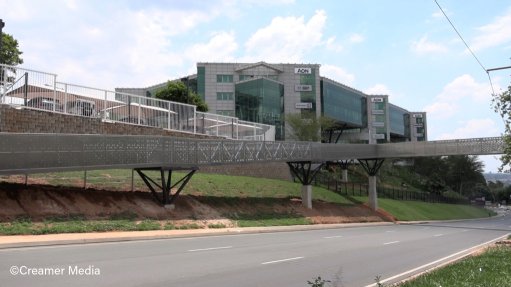South Africa can tap into oil and gas opportunities, if it gets investment certainty right
Investor certainty is key to unlocking South Africa’s oil and gas potential, which rivals that of neighbouring Namibia, says energy geoscience industry association EnerGeo Alliance global policy senior director Ross Compton.
The organisation analysed both fiscal revenue and non-revenue benefits, such as jobs, local procurement, infrastructure development, energy planning and security, stemming from each phase of building an upstream oil and gas sector in South Africa.
From the Block 11B/12B project in the Outeniqua basin off the southern coast, EnerGeo Alliance estimated that South Africa would be able to create more than 20 000 direct, indirect and induced jobs, with about one-quarter of the 2 420 direct jobs expected to be in manufacturing.
The broader sector could require 20 500 skilled and 33 000 unskilled jobs, EnerGeo Alliance says in the 'The Economic Benefits and Opportunities of Enhancing the Upstream Oil and Gas Sector in South Africa' report.
The Block 11B/12B project could potentially boost South Africa’s yearly GDP by almost R23-billion, Compton notes.
Similarly, the Brulpadda and Luiperd projects could contribute, on average, an additional R8.6-billion a year to the fiscus in taxes.
While direct revenues are significant, the broader economic impact on GDP, job creation, supply chain stimulation and secondary industry growth are equally crucial for long-term development, he emphasises.
The report highlights the significant potential at deepwater Orange basin, straddling South Africa and Namibia’s west coast. Following discoveries in 2021 and 2022, Namibia has attracted foreign direct investment of about $1.8-billion in its oil and gas sector, which boosted GDP by 4.2% in 2023 and has resulted in continuous investments and further investments in exploration.
Discoveries in the Orange basin in Namibian waters immediately adjacent to South African waters have also significantly derisked potential projects on the country’s west coast, he says.
Namibia also set out targets for production and employment in its latest development plan, reinforcing the policy certainty it has cultivated and the intended benefits for its population it aims to secure, he adds.
Further, while the report examines investments and jobs in Namibia, Suriname, and Ghana, each at different stages of upstream oil and gas development, it notes that these countries are following dual-track energy development strategies that also include the development of renewable-energy resources.
Namibia is, in addition to its oil and gas exploration, developing solar PV capacity to produce green hydrogen products for export.
Namibia’s plans involve a diverse energy mix and it’s being developed in relation to export markets, which is how it secured investment from Europe, he points out.
Therefore, it is important for South Africa to recognise the potential that oil and gas presents.
“Natural gas can effectively reduce the carbon intensity of some of its industrial inputs and complement alternative energy sources by providing reliable baseload and peaking power, thereby enhancing grid stability while South Africa scales up its renewable capacity,” says Compton.
“South Africa needs more energy for its economy and diversity is the sensible approach, which is what we have seen in the Namibian context.”
Additionally, South Africa has existing infrastructure, including a strategic crude oil storage hub at Saldanha Bay that has a capacity of 55-million barrels, and a 3 000 km network of high-pressure petroleum and gas pipelines operated by State-owned Transnet Pipelines.
This existing infrastructure may serve as a foundation for new upstream developments and leveraging this infrastructure could be helpful in significantly reducing initial capital expenditure and accelerating project timelines.
Further, integrating new production with existing midstream and downstream assets, such as reviving the Mossel Bay gas-to-liquids plant with domestic gas, can maximise domestic value addition.
The South African government has expressed strong support for reviving the Mossel Bay gas-to-liquids plant and rebuilding the former Sapref refinery in Durban to enhance domestic refining capacity and reduce import vulnerability.
Future development will require investment in new gas import infrastructure, expanded gas-to-power infrastructure and additional gas pipeline networks to effectively connect new supply to demand centres and stimulate broader localised gas demand across the country.
“It is not taxation or environmental regulations that deter investors; rather, investors require certainty and, if they can see far enough ahead to plan their finances, investors will come,” Compton says.
Further, another key aspect highlighted in the report is the potential regional significance of South Africa's oil and gas sector, either by supporting hydrocarbon activities in neighbouring countries with supplies or skills, or exporting hydrocarbons to its neighbours.
While the report focuses on oil and gas opportunities, there are additional commercial and industrial opportunities presented to South Africa by its location and existing infrastructure, including other export opportunities, such as green ammonia produced using renewable energy, and providing maritime services to ships.
The country is well placed to capitalise on these opportunities, but needs to firm up policy certainty to attract investments into the country's oil and gas and related sectors, Compton says.
Article Enquiry
Email Article
Save Article
Feedback
To advertise email advertising@creamermedia.co.za or click here
Comments
Announcements
What's On
Subscribe to improve your user experience...
Option 1 (equivalent of R125 a month):
Receive a weekly copy of Creamer Media's Engineering News & Mining Weekly magazine
(print copy for those in South Africa and e-magazine for those outside of South Africa)
Receive daily email newsletters
Access to full search results
Access archive of magazine back copies
Access to Projects in Progress
Access to ONE Research Report of your choice in PDF format
Option 2 (equivalent of R375 a month):
All benefits from Option 1
PLUS
Access to Creamer Media's Research Channel Africa for ALL Research Reports, in PDF format, on various industrial and mining sectors
including Electricity; Water; Energy Transition; Hydrogen; Roads, Rail and Ports; Coal; Gold; Platinum; Battery Metals; etc.
Already a subscriber?
Forgotten your password?
Receive weekly copy of Creamer Media's Engineering News & Mining Weekly magazine (print copy for those in South Africa and e-magazine for those outside of South Africa)
➕
Recieve daily email newsletters
➕
Access to full search results
➕
Access archive of magazine back copies
➕
Access to Projects in Progress
➕
Access to ONE Research Report of your choice in PDF format
RESEARCH CHANNEL AFRICA
R4500 (equivalent of R375 a month)
SUBSCRIBEAll benefits from Option 1
➕
Access to Creamer Media's Research Channel Africa for ALL Research Reports on various industrial and mining sectors, in PDF format, including on:
Electricity
➕
Water
➕
Energy Transition
➕
Hydrogen
➕
Roads, Rail and Ports
➕
Coal
➕
Gold
➕
Platinum
➕
Battery Metals
➕
etc.
Receive all benefits from Option 1 or Option 2 delivered to numerous people at your company
➕
Multiple User names and Passwords for simultaneous log-ins
➕
Intranet integration access to all in your organisation









